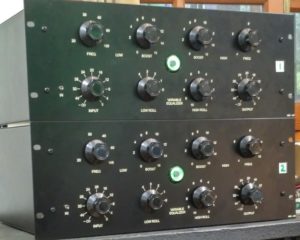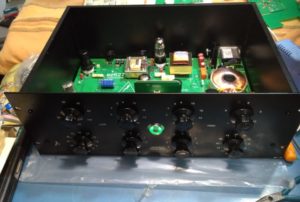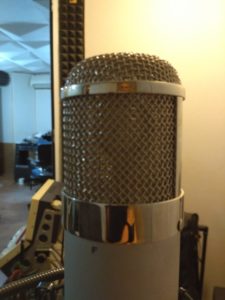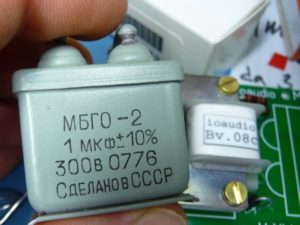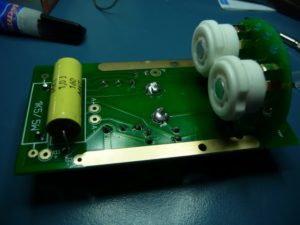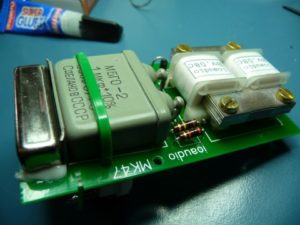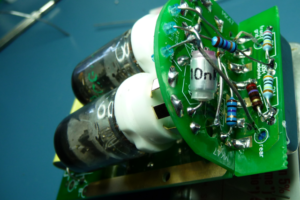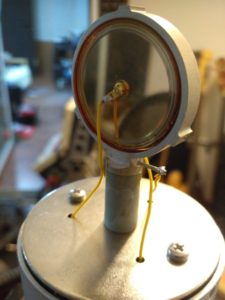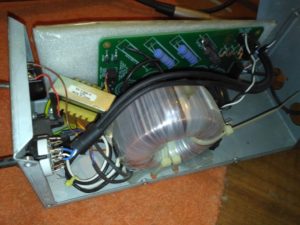Before finding this DIY kit on the AML online shop, I didn’t know anything about Fairchild equalizers. I knew this manufacturer was famous for the 670 limiters that I had used many times in different software reissues and that was the same Fairchild factory, building those fat Flying Boxcar planes that used to impress me very much, roaring low over my head while a kid.
Pultecs as rain
As I had no tube EQs in the studio, my initial idea was building a couple of classic Pultec equalizers clones. Sure there is no need to explain more, my typical readers can possibly know more than me about. Searching for the best way to go, I remained surprised to see how many clones or Pultec inspired equalizers exist today in the market, in the DIY or finished product form. Even big manufacturers like Behringer, recently introduced their Pultec, under their Klark Teknik brand, at an insanely cheap price.
Looking on the AML web for info on their Pultec kits, I totally fell in love for their Fairchild 627 reissue, instead. When I crave for new gear, I try to stay tight to my technical side and using logic, considering what is really needed. This brings me most of the time to fix, mod and recycle old gear still in my hands, instead of buying something brand new. OK, after decades soldering and fixing things, I can consider myself a bit a tech too, but I’m mainly a musician, then deeply attracted by fantasy and details that can look futile, but are extremely fascinating to the non-logic (illogic?) part of the mind! That green glowing “Magic Eye” on the front panel was too intriguing and it was calling for my eyes!
I had seen it already, so far in time but still, it was so intensely fixed in my memory! Like coming out from a Sci-Fi movie, the feeling was a mix of curiosity and fear, so green and scary to only possibly being an alien artifact and sure able to promptly take control of my mind! :D
The “Magic Eye”, the VU meter grandfather
Before the 1960s, needle VU meters were extremely expensive, high tech precision tools mainly for scientific equipment, telephone and military use. VUs started becoming a practicable form of measuring an audio signal, only after mass production started in Japan and LEDs made the application on consumer products, very cheap. Electron ray indicator tubes were the way to go, to have a reliable visual representation of the presence and amplitude of an audio signal. First implemented on radios to make it easier tuning to a station, they can be found on vintage tape recorders and televisions too. The magic eye is a miniature cathode ray vacuum tube, the same as the screen of old televisions, plus an amplification stage, like in usual tubes. While the rest of the “screen” (anode) is illuminated by the electrons strikes, a part (electrode) is kept dark until a signal is detected and the flow of electrons is allowed to run in that area too.
Building the AML Fairchild 627 EQ
Once the kit arrived the connection with aircrafts strangely was evident again, this time in the form of a deja vu: The PCBs were cleverly cut in the resin board, in a form it resembled me the plastic aircraft model kits so popular in my youth, where you snap off the part you need from the mainboard, through pre-cut junctions.
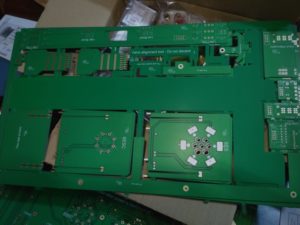
My previous DIY builds never started from complete kits, all I usually had were a couple of PCBs and a BOM (Bill Of Material) list. Often, finding the right components to buy and where can become a boring and long process. This time there was nothing to worry about, only buying the valves that weren’t included in the kit. These are pretty common tubes available easily, what I couldn’t find were matched pairs, as I would like to have installed, at the beginning.
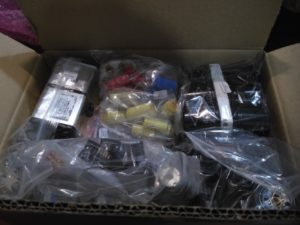
The quality of the boards is excellent and all components locations are labeled carefully. Same with the electronics, included in the kit are quality parts from manufacturers like Wima and Vishay. The transformers are Carnhill, the same I installed years ago in my DIY Neve 2254/33609 hybrid compressor (hopefully a good theme for a future post).
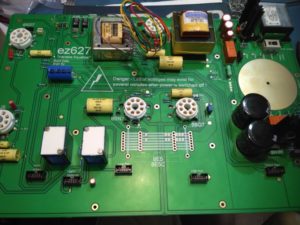
Arrived at the end of the project, the two Russian 6E5C/6E5S (C is an S in Cyrillic) hadn’t arrived yet, they were lost somewhere in the north of Spain. Calling the post office they told me my “Magic Eyes” had been held by customs (?), I can imagine the officers looking at my alien-ware, guessing what the hell are those for…
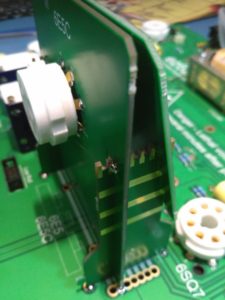
How does the 627 sound?
Even if the choice of building this processor might having being influenced not only by technically related reasons, I’m very satisfied with the results. All I passed through my units, in a couple of days they are alive, sounds very full and warm. I only tested my new pair on bass and guitars while mixing a new song, yesterday. As frequency action, its higher band goes up to 10kHz, below the 16kHz a Pultec EQP-1A (my initial choice), can work. The 627 is not too useful for brightening the higher part of the spectrum or shimmering, but very nicely working on lower frequencies. Testing it on bass, the tone I obtained was super fat and the action way more dramatic than I expected, in seconds I had a huge synth bass ready. I had to bounce the track to free the unit for processing some guitars, but I forced myself to limit the test to them only, or I would have started passing the whole song track by track, through the 627s! :D
I hope to make a follow up to this post, with the help of my OSO http://www.originalsoundsonly.com squad, with some audio tests, soon.
Links:
Most of the information on the Fairchild 627 Equalizer I could find online, comes from this link: http://www.preservationsound.com/?p=8602
The instructions on how to build the AML version of the 627, are online:
http://www.audiomaintenance.com/downloads/ez627_colourbook.pdf

